History
 As a grandmother and great grandmother, I want my grandchildren to love me and want me around, but even more that that, I want my grandchildren to respect me, because when it comes down to it, your good name is really the best thing to pass down to your kids, whether they take your last name or not. Your name is your identity, oh sure, you can change it, but once you have ruined your reputation, not much can fix it.
As a grandmother and great grandmother, I want my grandchildren to love me and want me around, but even more that that, I want my grandchildren to respect me, because when it comes down to it, your good name is really the best thing to pass down to your kids, whether they take your last name or not. Your name is your identity, oh sure, you can change it, but once you have ruined your reputation, not much can fix it.
As a prime example, take the case of Rainer Höss. The name might not ring any bells to you, and mostly that would be due to the fact that the English pronunciation of the name, doesn’t really tell you what the name is. Rainer Höss is the grandson of the former commandant of Auschwitz, Rudolph Höss, and he knows first-hand how bad it can be when your name has been ruined.
In 1933, Rudolph Höss joined the SS in Nazi Germany, and in 1934 he was attached to the SS at Dachau. On August 1, 1938, Rudolph Höss was appointed as adjutant of the Sachsenhausen concentration camp until his appointment as Kommandant of the newly-built camp at Auschwitz in early 1940. In May 1941, SS commander Heinrich Himmler told Höss that Hitler had given orders for the final solution of the Jewish question and that “I have chosen the Auschwitz camp for this purpose.” It was then that Höss converted Auschwitz into an extermination camp and installed gas chambers and crematoria that were capable of killing 2,000 people every hour. He was brutally meticulous…counting corpses with the cool dedication of a trained bookkeeper, he went home each night to the loving embrace of his own family who lived on the camp grounds. Rudolph Höss had no qualms about watching millions of innocent human beings dissolve in the gas chambers, burn in the crematoriums and their teeth melt into gold bars, Höss even wrote poetry about the “beauty” of Auschwitz. He was a monster of epic proportions.
Nazi leader Adolf Eichmann recounted in his memoirs how he was assigned in early 1942 to visit the Auschwitz death camp and report back to superiors on the killing of Jews. He wrote that the methods for killing were still crude, but these represented a gruesome foretaste of the factory-style gas chambers and crematoria that were to follow: “Höss, the Kommandant, told me that he used sulfuric acid to kill. Round cotton wool filters were soaked with this poison and thrown into the rooms where the Jews were assembled. The poison was instantly fatal. He burned the corpses on an iron grill, in the open air. He led me to a shallow ditch where a large number of corpses had just been burned.”
Höss eventually found that gassing by carbon monoxide was inefficient and introduced the cyanide gas Zyklon B. He later recalled: “The gassing was carried out in the detention cells of Block 11. Protected by a gas mask, I watched the killing myself. In the crowded cells, death came instantaneously the moment the Zyklon B was thrown in. A short, almost smothered cry, and it was all over…I must even admit that this gassing set my mind at rest, for the mass extermination of the Jews was to start soon, and at that time neither Eichmann nor I was certain as to how these mass killings were to be carried out. It would be by gas, but we did not know which gas and how it was to be used. Now we had the gas, and we had established a procedure.” Rudolph Höss not only “enjoyed” his work, but he was proud of his accomplishments.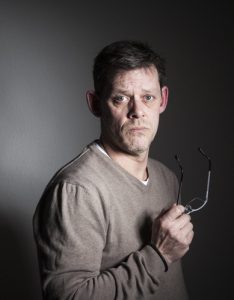
His family, or at least his grandson Ranier Höss was horrified by the legacy his grandfather so “lovingly” left him. He could not believe that his grandfather was not only proud of what he had done, but he liked it so much that he wanted to watch from inside the chamber. Rainer Höss has spent his whole life trying to escape the stigma of being related to Rudolph Höss. Rainer doesn’t expect to be forgiven…he knows that he will always be blamed for what his grandfather did, because his grandfather left him the name. His grandfather was proud his “accomplishments.” He honestly thought everyone would be proud. He honestly thought he was a hero.
Rainer Höss doesn’t expect to be “forgiven.” He knows it wasn’t his fault, but he understands the reasons people react the way they do, because it’s how he would react. That is the real legacy his “grandfather” left him. You see, for Rainer Höss…grandfather is an abstract word.
 In 1980, the United States started a national clean-up program called Adopt-A-Highway. I’m sure we have all seen the signs along the highway, although these days we are so used to them, that it’s easy to miss them, if we aren’t paying attention. Littering was a big problem when I was growing up. I recall everyone tossing trash out the window, while driving down the highway. Then a man, by the name of James Evans, an engineer for the Texas Department of Transportation (TxDOT), saw debris flying out of a pickup truck bed. Litter cleanup by the city was expensive, so Evans sought the help of local groups to sponsor the cleaning of sections of the highway. In addition, the efforts of Billy Black, a TxDOT public information officer, led to quarterly cleanup cycles, volunteer safety training, the issuing of reflective vests and equipment, and the posting of adopt-a-highway signs.
In 1980, the United States started a national clean-up program called Adopt-A-Highway. I’m sure we have all seen the signs along the highway, although these days we are so used to them, that it’s easy to miss them, if we aren’t paying attention. Littering was a big problem when I was growing up. I recall everyone tossing trash out the window, while driving down the highway. Then a man, by the name of James Evans, an engineer for the Texas Department of Transportation (TxDOT), saw debris flying out of a pickup truck bed. Litter cleanup by the city was expensive, so Evans sought the help of local groups to sponsor the cleaning of sections of the highway. In addition, the efforts of Billy Black, a TxDOT public information officer, led to quarterly cleanup cycles, volunteer safety training, the issuing of reflective vests and equipment, and the posting of adopt-a-highway signs.
Like any new idea, the Adopt-A-Highway program took a while to kick off. but in 1985, the Tyler Civitan Club became the first group to volunteer, adopting by two miles along US Route 69 just north of Loop 323 between Tyler and Interstate 20. It was the kick start the program needed. The program proved to be very successful and has since spread to 49 states, Puerto Rico, Canada, New Zealand, Australia, and Japan. Vermont has a similar program called “Green Up.”
Some states, such as Nevada, allow both Adopt-a-Highway and Sponsor-a-Highway programs. In both programs, an organization that contributes to the cleanup is allowed to post its name. That is where the similarity ends, however. While an adopting organization provides the volunteers who do the litter pickup, a sponsoring organization instead pays professional contractors to do the work. Safety concerns, make the latter more typical in highways with high traffic volumes.
There have been some controversies, such as when the KKK wanted to join. People were against it and some anger was stirred up. The Adopt-A-Highway program allows any organization to participate, which became a point of controversy when the Ku Klux Klan adopted a portion of Interstate 55 just south of St. Louis, Missouri. While legally the program had to uphold the groups’ rights to participate, public outcry and repeated destruction of its sign was a cause of concern. In November 2000, the section of highway was designated as the Rosa Parks Freeway after the famous civil rights figure. It was then that the problem began to work itself out. The KKK sponsorship was later dropped from the program for the group’s failure to fulfill its obligations, and the Missouri Department of Transportation adopted specific criteria to prohibit hate groups from future participation. However, the 8th Circuit Court of Appeals ruled that any attempt to bar the Klan from participation in the Adopt-a-Highway program on the basis of the group’s purpose is a violation of the First Amendment. The Supreme Court declined to hear the case, so the ruling stood.
In January 2005, the American Nazi Party adopted a stretch of the rural Sunnyview Road NE outside Salem, Oregon. Two signs were put up along the road that bore the names of the American Nazi Party and NSM. The signs, which cost $500 and were almost immediately subject to vandalism, have since been removed. The American Nazi Party’s chair, Rocky J. Suhayda, claimed to have no association with the Adopt a Highway program. In 2009, the state of Missouri renamed a section of highway after Rabbi Abraham Joshua Heschel, because it had been adopted by a neo-Nazi group. Rabbi Heschel fled the Nazis’ advance in Europe and became a  prominent theologian and civil rights advocate in the United States before his death in 1972. Rabbi Heschel’s daughter opposed this decision.
prominent theologian and civil rights advocate in the United States before his death in 1972. Rabbi Heschel’s daughter opposed this decision.
To me it seems that caring for the earth, and hate groups just don’t go together. I don’t understand why a law can’t be made, to stop hate groups from participation in this or anything else that is service oriented. I think that any group that joins to exploit the sensational aspect of things should be able to be banned, but that is my opinion. Economically, the program may be viewed as a way of getting around regulations prohibiting billboards next to a highway and on a per-view basis. Still, it is more economical than billboards.
 I read a book the other day, called “The Librarian of Auschwitz.” It is a true story about a woman named Dita Polachova , who at the age of 14 years was imprisoned at Auschwitz. I was moved by the sacrifices the people in her network made, as well as the many people I have read about in the past. We, in America, don’t often understand the need to sacrifice our own safety, and many people wouldn’t do it even if it was necessary. Dita was one of those people who would.
I read a book the other day, called “The Librarian of Auschwitz.” It is a true story about a woman named Dita Polachova , who at the age of 14 years was imprisoned at Auschwitz. I was moved by the sacrifices the people in her network made, as well as the many people I have read about in the past. We, in America, don’t often understand the need to sacrifice our own safety, and many people wouldn’t do it even if it was necessary. Dita was one of those people who would.
She was in charge of eight books that someone had smuggled into Auschwitz, the first sacrifice. It was something that could have cost the smuggler his life, but he saw value in the ability to get the books into the hands of the family camp, and the children’s school at Auschwitz. The family camp, and the coordinated children’s school was unique to Auschwitz. Most camps did not allow families to stay together. In fact, most of the children were killed upon arrival at the camps. The family camp and the children’s school were the  brainstorm sacrifice Freddy Hirsch, who was a Jewish athlete, one of the great runners. He was almost impossible to beat. I don’t know if that was what gave him some pull or not, but he made a sacrifice that turned out to be the ultimate sacrifice. Fredy Hirsch would not survive Auschwitz. It wasn’t because the books were found, but rather that the Nazis were taking away the family camp and children’s school. He took his own life. He assumed that the precious books would be lost, but he had underestimated Dita, who managed to get the books back in their hiding place, where they were not found by the Nazis.
brainstorm sacrifice Freddy Hirsch, who was a Jewish athlete, one of the great runners. He was almost impossible to beat. I don’t know if that was what gave him some pull or not, but he made a sacrifice that turned out to be the ultimate sacrifice. Fredy Hirsch would not survive Auschwitz. It wasn’t because the books were found, but rather that the Nazis were taking away the family camp and children’s school. He took his own life. He assumed that the precious books would be lost, but he had underestimated Dita, who managed to get the books back in their hiding place, where they were not found by the Nazis.
Dita outlived the Nazi reign of terror and went on to lead a happy life, despite the memories that would haunt her for the rest of her life. She married Arvid Harnack, an author, who with the writer Adam Kuckhoff and his wife Greta, who with Mildred Fish-Harnack brought together a discussion circle which debated political perspectives on the time after the National Socialists’ expected downfall or overthrow. From these meetings arose what the Gestapo called the Red Orchestra resistance group.
The Red Orchestra, Die Rote Kapelle in German, or the Red Chapel as it was known in Germany, was the name given by the Gestapo to anti-Nazi resistance workers during World War II. The members included friends of Harro Schulze-Boysen and Arvid Harnack in Berlin, as well as groups working independently of these intelligence groups, working in Paris and Brussels, that were built up on behalf of Leopold Trepper on behalf of the Soviet Main Directorate of State Security. The Red Orchestra was neither  directed by Soviet communists nor under a single leadership but a network of groups and individuals, often operating independently contrary to legend. About 400 members are known by name at this time. They printed illegal leaflets hoping to incite civil disobedience, helped Jews and opposition escape the regime, documented the crimes of the Nazi regime, and forwarded military intelligence to the Allies. The public perception of the “Red Orchestra” is characterized by the transfigurations of the post-war years and the Cold War.
directed by Soviet communists nor under a single leadership but a network of groups and individuals, often operating independently contrary to legend. About 400 members are known by name at this time. They printed illegal leaflets hoping to incite civil disobedience, helped Jews and opposition escape the regime, documented the crimes of the Nazi regime, and forwarded military intelligence to the Allies. The public perception of the “Red Orchestra” is characterized by the transfigurations of the post-war years and the Cold War.
The network of people willing to risk their own lives during the Holocaust years was extensive. From Jews who risked their lives to make life better in and out of the camps, to non-Jews who risked their lives to fight against the atrocities of the Nazi Regime and the Third Reich. These were brave people who knew that bravery isn’t about being fearless, but rather being brave despite the fear. Their stories deserve to be told. They deserve recognition, because in the face of the worst odds, they took action anyway. That is true bravery, and true sacrifice.
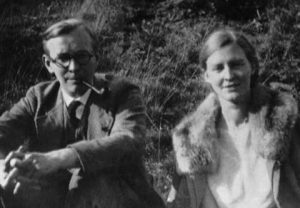 Mildred Fish was an American-German literary historian, translator, and later, a German Resistance fighter in Nazi Germany. They fell in love and married, moving to Germany right after. She met her future husband, Arvid Harnack in 1926. Arvid was a grad student at the University of Wisconsin-Milwaukee, and a Rockefeller Fellow from Germany. In Germany, Mildred worked in education and Arvid secured a position with the Reich Economic Ministry. Throughout the 1930s, Mildred and Arvid, became increasingly alarmed by Hitler’s rise to power. They could see that he had ulterior
Mildred Fish was an American-German literary historian, translator, and later, a German Resistance fighter in Nazi Germany. They fell in love and married, moving to Germany right after. She met her future husband, Arvid Harnack in 1926. Arvid was a grad student at the University of Wisconsin-Milwaukee, and a Rockefeller Fellow from Germany. In Germany, Mildred worked in education and Arvid secured a position with the Reich Economic Ministry. Throughout the 1930s, Mildred and Arvid, became increasingly alarmed by Hitler’s rise to power. They could see that he had ulterior 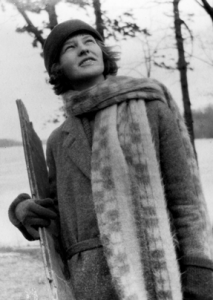 motives. They communicated with a close circle of associates who believed communism and the Soviet Union might be the only possible stumbling block to complete Nazi tyranny in Europe.
motives. They communicated with a close circle of associates who believed communism and the Soviet Union might be the only possible stumbling block to complete Nazi tyranny in Europe.
When Mildred came to the United States for a lecture tour in 1937, her family begged her to relocate permanently, but she refused and resumed her life in Germany. I suppose she thought she could be of better assistance there than in the United States. When war was declared in 1941, she did not leave with other Americans.  They couldn’t leave, because by then, Mildred and Arvid were involved with a communist espionage network known by the Gestapo as “The Red Orchestra”. The ring, which provided important intelligence to the USSR, was compromised and the members were arrested. I’m sure they knew this was a death sentence for them.
They couldn’t leave, because by then, Mildred and Arvid were involved with a communist espionage network known by the Gestapo as “The Red Orchestra”. The ring, which provided important intelligence to the USSR, was compromised and the members were arrested. I’m sure they knew this was a death sentence for them.
After they were tried as traitors, Arvid was sentenced to death and executed on December 22, 1942. Mildred was given a six year sentence, but Hitler refused to endorse her punishment. As only a dictator can, he insisted on a retrial, after which she was condemned on January 16, 1943. She was beheaded by guillotine at Plotzensee Prison on February 16, 1943. She was the only American female executed on the orders of Adolf Hitler. Because of her connection to possible communist sympathies and post-war McCarthyism, her story is virtually unknown in the United States.
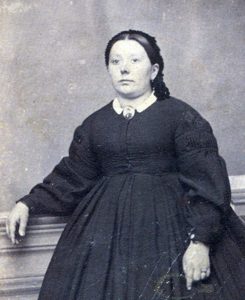
 Every year, as the new year approaches, we take a look at our life and try to think of how we could improve ourselves. Many of us decide that it is time to start a new diet. Every year some new diet shows up. Some people will find something that works for them in the long term, but the reality is that just as often, the new diet doesn’t work, and they set out in search of the next new thing. The reality is that no one diet works for everyone, and dieters sometimes have to try several to see what works for them. It is a fact that has irritated every one of us for years.
Every year, as the new year approaches, we take a look at our life and try to think of how we could improve ourselves. Many of us decide that it is time to start a new diet. Every year some new diet shows up. Some people will find something that works for them in the long term, but the reality is that just as often, the new diet doesn’t work, and they set out in search of the next new thing. The reality is that no one diet works for everyone, and dieters sometimes have to try several to see what works for them. It is a fact that has irritated every one of us for years.
Most people on a diet know that one of the first things to go is the sugar, join a gym, and stubbornly stick to our plan. What we don’t realize is that diets are not a new  thing. As early as the 18th century, diet doctors began to recommend strict, low fat meals, and newspapers featured adverts for tonic and diet pills. Who would have thought. The idea of beauty changes, and it had changed to a much more slender look.
thing. As early as the 18th century, diet doctors began to recommend strict, low fat meals, and newspapers featured adverts for tonic and diet pills. Who would have thought. The idea of beauty changes, and it had changed to a much more slender look.
Suddenly, attitudes towards over-indulgence, obesity, and body shape were hotly debated, and there developed a pressure to demonstrate self-restraint. Of course, the debates were also about what was a healthy way to eat, and what wasn’t. That debate continues to this day. At one point, a doctor lost weight by cutting fat, and the low-fat craze began. Many people would say that low-fat should not be a craze, but a standard. I won’t “weigh” in on that debate, because we all have our own ideas. Since that time, we have all tried a multitude of diets in an attempt to reach our perfect selves. We can say that some of the new body images would be healthier, and we would be right. Too skinny isn’t healthy, nor is too fat. The argument on that will continue, just as it started in the 18th century…a debate in progress.

 The American prisoners of war had heard the Allied planes pass overhead many times before, but this was different. Along with the sound of the planes, came the howling of Dresden’s air raid sirens. Dresden was known as the “Florence of the Elbe.” The American prisoners of war were moved two stories below into a meat locker. I don’t really understand that in light of the outcome. The Germans didn’t care about their prisoners, but I guess they didn’t care about their own countrymen either. Why would they move their prisoners to a place of safety, but leave the people of the town to fend for themselves. I suppose that they might have wanted the prisoners for leverage, but how good is a victory, if there are no one to live in the town.
The American prisoners of war had heard the Allied planes pass overhead many times before, but this was different. Along with the sound of the planes, came the howling of Dresden’s air raid sirens. Dresden was known as the “Florence of the Elbe.” The American prisoners of war were moved two stories below into a meat locker. I don’t really understand that in light of the outcome. The Germans didn’t care about their prisoners, but I guess they didn’t care about their own countrymen either. Why would they move their prisoners to a place of safety, but leave the people of the town to fend for themselves. I suppose that they might have wanted the prisoners for leverage, but how good is a victory, if there are no one to live in the town.
In this instance, I suppose it didn’t matter, because when the prisoners were brought back to the surface, “the city was gone”…levelled by the bombs from the RAF and the USAAF. One prisoner, Kurt Vonnegut who was a writer and social critic, recalled the scene…shocked. The devastation was unbelievable, the bombing had reduced the “Florence of the Elbe” to rubble and flames. Still, Vonnegut could not help but be thankful that he was still alive. Who wouldn’t be thankful. He was alive, and he would be forever thankful. Who wouldn’t be. It was a second chance.
The devastating, three-day Allied bombing attack on Dresden from February 13 to 15, 1945 in the final months of World War II became one of the most controversial Allied actions of the war. Some 2,700 tons of explosives and incendiaries were dropped by 800-bomber raid and decimated the German city.
Dresden was a major center for Nazi Germany’s rail and road network. The plan was to destroy the city, and thereby overwhelm German authorities and services, and clog all transportation routes with hordes of refugees. An estimated 22,700 to 25,000 people were killed, in the attacks. Normally, Dresden had 550,000 citizens, but at the time there were approximately 600,000 refugees too. The Nazis tried to say that 550,000 had been killed, but that number was quickly proven wrong.

The Allied assault came a less than a month after 19,000 US troops were killed in Germany’s last-ditch offensive at the Battle of the Bulge, and three weeks after the grim discovery of the atrocities committed by Nazi forces at Auschwitz. In an effort to force a surrender, the Dresden bombing was intended to terrorize the civilian population locally and nationwide. It certainly had that effect in 1945.

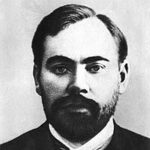 Scientists have done much for mankind. They are dedicated to finding a solution, a cure, a way, often sacrificing their own time, family life, and sometimes even their own life, to solve a problem, find a cure, or make things better. It seems a strange thing to give one’s life for an experiment, and yet people have done just that.
Scientists have done much for mankind. They are dedicated to finding a solution, a cure, a way, often sacrificing their own time, family life, and sometimes even their own life, to solve a problem, find a cure, or make things better. It seems a strange thing to give one’s life for an experiment, and yet people have done just that.
Marie Curie conducted pioneering research on radioactivity, and the discovery of two elements, polonium and radium. Unfortunately, she would die of aplastic anemia, a disease of the bone marrow that was very likely caused by the radioactivity she had been exposed for so many years.
Alexander Bogdanov was obsessed with Hematology. Bogdanov did research in blood transfusions in the 1920s. In fact, he gave himself blood transfusions…over and over. He insisted that the transfusions made him feel better. Maybe they did, but they would also be his undoing, when he transfused himself with the blood of a student who had malaria. Bogdanov contracted the disease and died.
Many people have heard of David Johnston who was a volcanologist. He wanted to see Mount Saint Helens for himself. He was the first to report and urge the evacuation, but seeing the show cost him his life too. He was killed by the Pyroclastic Blast.
Probably one of the most awful deaths to me was that of Harold Maxwell-Lefroy. He spent a lot of time studying bugs, or rather how to get rid of them. He knew that something needed to be done to get rid of these pests. He 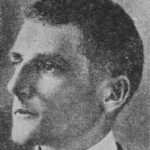
 was very good at his work, but unfortunately, the chemicals would kill people too, and he inhaled enough to do so. In his lab, he inhaled a lethal amount of Lewisite.
was very good at his work, but unfortunately, the chemicals would kill people too, and he inhaled enough to do so. In his lab, he inhaled a lethal amount of Lewisite.
There are others, maybe more that anyone knows of. If they weren’t famous or successful, their deaths might have looked like accidents, diseases, accidental overdoses, or even suicide, when in fact they were nothing of the kind. They are just some of the great scientific minds who gave their all in the name of science. Sadly, by accident.
 When we think of space, we picture things floating slowly and peacefully along…or at least I do, but the reality is that most things in space are moving quite fast, and along a specific trajectory. While it seems quite chaotic when you think about all the things that are floating around out there, for the most part, it all moves along in a completely organized manner…for the most part.
When we think of space, we picture things floating slowly and peacefully along…or at least I do, but the reality is that most things in space are moving quite fast, and along a specific trajectory. While it seems quite chaotic when you think about all the things that are floating around out there, for the most part, it all moves along in a completely organized manner…for the most part.
For things in space to change course, there must be something that interferes with the trajectory…a planet that gets in the way, a new piece of space junk that crosses its path, or a satellite that is falling out of orbit. Even with as much “stuff” as exists in space, these are not common occurrences…or at least not as common as you might think. Nevertheless, on February 10, 2009, two communications satellites…the active commercial Iridium 33 and the derelict Russian military Kosmos-2251…accidentally collided at a speed of 26,000 miles per hour and an altitude of 490 miles above the Taymyr Peninsula in Siberia. That speed puts the collision in the hypervelocity category…in fact, very much so. Hypervelocity is very high velocity, listed as 6,700 miles per hour, or more. At 26,000 miles per hour, this collision more than qualified. That kind of speed is shocking…at least in my mind, and the collision must have been horrific. While there had been other collisions in space, this was the first time a hypervelocity collision occurred between two satellites. Prior to that, all accidental hypervelocity collisions had involved a satellite and a piece of space debris.
The collision occurred at 16:56 UTC, which is the time standard commonly used across the world. The world’s timing centers have agreed to keep their time scales closely synchronized, therefore the name Coordinated Universal Time. The collision destroyed both the Iridium 33 and Kosmos-2251. The Iridium satellite was operational at the time of the collision. Kosmos-2251 had gone out of service in 1995. Kosmos-2251 had no propulsion system, and was no longer actively controlled. Had it been actively controlled, they might have guided it out of harm’s way. NASA initially estimated the debris at 1,000 pieces larger than 3.9, and many smaller pieces, but in reality the US Space Surveillance Network had cataloged 2,000 large pieces by July 2011. They thought the International Space Station, which orbits at about 270 miles below the collision course, was safe, but one piece came within 130 yards at one time, making for a tense few hours.
In the days following the first reports of the incident in 2009, a number of reports of phenomena in the US states of Texas, Kentucky, and New Mexico were attributed to debris from the collision. NASA and the United States Strategic Command, which tracks satellites and orbital debris, did not announce that any debris had  entered the atmosphere at the time and reported that these phenomena were unrelated to the collision. Still, things like sonic booms heard by witnesses in Kentucky, on February 13, 2009 made no sense in any other scenario. Then, the National Weather Service issued an information statement alerting residents of sonic booms due to the falling satellite debris. The Federal Aviation Administration also released a notice warning pilots of the re-entering debris. However, some reports include details that point to these phenomena being caused by a meteoroid shower rather than debris. A very bright meteor over Texas on February 15, 2009, was mistaken for re-entering debris. By December 2011, many pieces of the debris were in an observable orbital decay, moving towards Earth, and were expected to burn up in the atmosphere within one to two years. By January 2014, 24% of the known debris orbits had actually decayed. In 2016, Space News listed the collision as the second biggest fragmentation event in history, with Kosmos-2251 and Iridium 33 producing respectively 1,668 and 628 pieces of cataloged debris, of which 1,141 and 364 pieces of tracked debris remain in orbit as of January 2016.
entered the atmosphere at the time and reported that these phenomena were unrelated to the collision. Still, things like sonic booms heard by witnesses in Kentucky, on February 13, 2009 made no sense in any other scenario. Then, the National Weather Service issued an information statement alerting residents of sonic booms due to the falling satellite debris. The Federal Aviation Administration also released a notice warning pilots of the re-entering debris. However, some reports include details that point to these phenomena being caused by a meteoroid shower rather than debris. A very bright meteor over Texas on February 15, 2009, was mistaken for re-entering debris. By December 2011, many pieces of the debris were in an observable orbital decay, moving towards Earth, and were expected to burn up in the atmosphere within one to two years. By January 2014, 24% of the known debris orbits had actually decayed. In 2016, Space News listed the collision as the second biggest fragmentation event in history, with Kosmos-2251 and Iridium 33 producing respectively 1,668 and 628 pieces of cataloged debris, of which 1,141 and 364 pieces of tracked debris remain in orbit as of January 2016.
Contrary to what was expected, a small piece of Kosmos-2251 satellite debris safely passed by the International Space Station at 2:38 am EDT, Saturday, March 24, 2012, at a distance of just 130 yards. As a precaution, ISS management had the six crew members on board the orbiting complex take refuge inside the two docked Soyuz rendezvous spacecraft until the debris had passed. It was a tense time…not knowing if the debris would hit them or miss them. It is not unusual to see two satellites approach within several miles of each other. In fact, these events occur numerous times each day. It’s a challenge to sort through the large number of potential collisions to identify those that are of higher risk. Precise, up-to-date information regarding current satellite positions is difficult to obtain. In fact, the calculations made by CelesTrak had expected these two satellites to miss by 1,916 feet…not a huge distance, but had it been right, it would have been enough.
Planning an avoidance maneuver with due consideration of the risk, the fuel consumption required for the maneuver, and its effects on the satellite’s normal functioning can also be challenging. John Campbell of Iridium spoke at a June 2007 forum discussing these tradeoffs and the difficulty of handling all the notifications they were getting regarding close approaches, which numbered 400 per week for approaches within three miles for  the entire Iridium constellation. He estimated the risk of collision per conjunction as one in 50 million…oops!! That was just a little bit off.
the entire Iridium constellation. He estimated the risk of collision per conjunction as one in 50 million…oops!! That was just a little bit off.
This collision and numerous near-misses have renewed calls for mandatory disposal of defunct satellites by deorbiting them, or at the very least, sending them to a graveyard orbit, but no such international law exists at this time. Nevertheless, some countries have adopted such a law domestically, such as France in December 2010. The United States Federal Communications Commission requires all geostationary satellites launched after March 18, 2002, to commit to moving to a graveyard orbit at the end of their operational life. It’s a start.
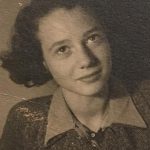 Just imagine living in a place where owning or even borrowing a book could get you, and anyone who gave you a book, killed. During the Holocaust, the Jews and other nationalities and religious groups who didn’t fit in with the Aryan race, were considered non-people, and therefore expendable. They were not allowed to live like normal people. They were considered “expendable.” Their lives were not worth the trouble it took to care for them, even their fiends and neighbors were expected to turn them over to be deported to the ghettos and even killed. They were often powerless to help themselves. Still, most of them never lost hope. When the Nazis began to occupy Czechoslovakia in 1939, the persecution of the Jews began almost immediately. Things were hard for everyone, but the children were often in more peril than anyone else. Many were to young to work and that made them even less “important” to the Nazis. To make matters worse, they were often separated from their parents…everything they knew was stripped from them.
Just imagine living in a place where owning or even borrowing a book could get you, and anyone who gave you a book, killed. During the Holocaust, the Jews and other nationalities and religious groups who didn’t fit in with the Aryan race, were considered non-people, and therefore expendable. They were not allowed to live like normal people. They were considered “expendable.” Their lives were not worth the trouble it took to care for them, even their fiends and neighbors were expected to turn them over to be deported to the ghettos and even killed. They were often powerless to help themselves. Still, most of them never lost hope. When the Nazis began to occupy Czechoslovakia in 1939, the persecution of the Jews began almost immediately. Things were hard for everyone, but the children were often in more peril than anyone else. Many were to young to work and that made them even less “important” to the Nazis. To make matters worse, they were often separated from their parents…everything they knew was stripped from them.
In 1942, when a girl named Dita Polachova was 13 years old, she and her parents were deported to Ghetto Theresienstadt life got even worse than it was before. Later they were sent to Auschwitz, where Dita’s father died. She and her mother were sent to forced labor in Germany and finally to a concentration camp called Bergen-Belsen. Dita’s mother died at Bergen-Belsen. Even in the face of so much sadness in her life, Dita never gave up. She risked her own life to protect a selection of eight books smuggled in by prisoners of Auschwitz. She stored the books in hidden pockets in her smock, and circulated them to the hundreds of children imprisoned in Block 31. Books were forbidden for the prisoners in the camps. The Nazis didn’t want them to have any knowledge of the outside world, or access to any kind of education materials or any books. The Nazis believed that none of these people were going to survive their stay in the camps anyway, so they didn’t need to do anything but work and die.
The prisoners had different ideas. Within the walls, there was a family camp known as BIIb. It was a place where the children could play and sing, but school was prohibited. Nevertheless, the Nazis were not able to enforce their will on the people. In spite of the orders of the Nazis, Fredy Hirsch established a small, yet influential school to house the children while their parents slaved in the camp. The materials were the biggest problem. The books, had to be hidden from the Nazi guards at all costs. Hirsch selected Dita, a brave and independent young woman from Prague to take over as the new Librarian of Auschwitz in January of 1944. Dita was a brave girl, who took her responsibility seriously.
While her parents are trying to stay alive in Auschwitz, Dita was fighting her own battle to preserve the books that bring joy to the children in the camp. The books are one of the few things that allow the children to escape from the walls in which they are surrounded, even if just for a moment. As the war progresses, Dita continues to diligently serve the teachers and children of Block 31. Then, Dita’s situation grew much worse. Her father passed away in the camp due to pneumonia. Dita and her mother are left alone to fight the battle on their own. Dita’s mother is grew weaker with age, and Dita knew she had to assume more responsibility. Dita is aware of the fact that the camp is simply a front to produce Nazi propaganda. She began to fight despair, as she struggles to feel the value in her life. By March 1944, the feeling of hopelessness grows. The Nazis announce that the inmates who arrived in September will be transferred to another division, which is really code for  murder. The BIIb continued until they heard that the Nazis are going to liquidate the family camp and separate the fit to work from the rest. Dita’s mother Liesl, was grown old and very weak by now. She was able to sneak into the group that is fit to work along with her daughter, narrowly. They were sent to the Bergen-Belsen concentration camp. Just when Dita gets to the point where she feels this might be the end, the Allied forces liberate the camp, but it is too late for Dita’s mother, who died just after the English arrived. Dita is now free, but it has been at great cost…the kind most of us cannot begin to comprehend. Dita later met and married Otto Kraus, an author, and they settled in Israel where they were both teachers.
murder. The BIIb continued until they heard that the Nazis are going to liquidate the family camp and separate the fit to work from the rest. Dita’s mother Liesl, was grown old and very weak by now. She was able to sneak into the group that is fit to work along with her daughter, narrowly. They were sent to the Bergen-Belsen concentration camp. Just when Dita gets to the point where she feels this might be the end, the Allied forces liberate the camp, but it is too late for Dita’s mother, who died just after the English arrived. Dita is now free, but it has been at great cost…the kind most of us cannot begin to comprehend. Dita later met and married Otto Kraus, an author, and they settled in Israel where they were both teachers.
 One of the criminal acts of Hitler and the Third Reich was to confiscate the riches of the countries they were occupying. It was not the worst of the atrocities, but it was up there. By confiscating the food and money of these countries, the Nazis left the people in those countries broke and starving. Even as the Third Reich began to know they were losing the war, there was hope that they would go into hiding, re-group, and rise again. If that was going to happen, they were going to need money, and the only way to insure that was to begin mass confiscation and hiding of the riches of these nations.
One of the criminal acts of Hitler and the Third Reich was to confiscate the riches of the countries they were occupying. It was not the worst of the atrocities, but it was up there. By confiscating the food and money of these countries, the Nazis left the people in those countries broke and starving. Even as the Third Reich began to know they were losing the war, there was hope that they would go into hiding, re-group, and rise again. If that was going to happen, they were going to need money, and the only way to insure that was to begin mass confiscation and hiding of the riches of these nations.
Lake Toplitz was located in a very remote area of Austria, southeast of Salzburg. In modern day Austria, the area is appropriately called The Dead Mountains. Basically, if you’re looking for somewhere to get away from it all, Lake Toplitz is a good choice. During the war, the lake’s remoteness made it the perfect place for the Nazis to test weapons…including torpedoes. It was also one of the places the Nazi elite fled to when it came time to make their last stand. That fact, in and of itself, makes it a logical place to hide funds for a future comeback of the Third Reich.
In 1945, Hitler’s Germany had only a few more weeks before their horrific reign ended, found themselves stuck in the middle, being crushed by the Russian tanks coming in from the east, and the Americans and British from the north. As their fronts collapsed, the Nazis made several efforts to hide their stolen wealth and treasure. The practice of hiding the wealth is well known, because a lot of that hidden wealth has already been discovered in mines, underground bunkers, and hastily buried fortifications.
Everyone seemed to be looking for the buried treasure left by the Nazis. At one time, a pair of treasure hunters announced they found the location of a buried German armored train in the hills of Poland. Their claim seemed 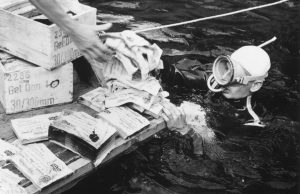 possible, so a search was held. In the end, it was determined that the “train” was nothing more than an ice covered rock formation. Still, the possibility of a treasure train is very real. Unfortunately, the big news about the “train” caused such a stir that another find was all but lost to the world.
possible, so a search was held. In the end, it was determined that the “train” was nothing more than an ice covered rock formation. Still, the possibility of a treasure train is very real. Unfortunately, the big news about the “train” caused such a stir that another find was all but lost to the world.
There had been stories about plunder the Nazis may have hidden in the cold, deep waters of Lake Toplitz, as the Allies closed in. Reports came out that the lake held iron boxes full of counterfeit British currency and the printing plates to make more…a part of Hitler’s Operation Bernhard, which was a plan to wreck the British economy by flooding the world with fake bank notes. That report turned out to be true, when dive crews recovered several chests stuffed with counterfeit cash in 1959. The divers reported there were more chests stuck in the mud, but they were too deep to recover. More stories about Nazi plunder at the bottom of Lake Toplitz surfaced. The nephew of one German officer made the claim that the Nazis sank chests loaded with gold into the lake. Plates from the lost fabled Russian Imperial Amber Room, which had also been rumored to be on the Nazi gold train in Poland, are also thought by others to be on the bottom of the icy lake. Along with treasure there are stories of weapons components, ammunition, rocket fuel, and maps showing the locations of even more stolen Nazi loot.
There have been many attempts to salvage treasure from the bottom of the lake over the years, with most of them ending in death. The lake is deep and cold, and has many tangled trees and branches that can trap a person. In 1983 the Austrian government declared the lake had been completely searched and anything of value removed. That turned out to be a fake story designed to discourage treasure hunters. Biologists studying the lake have turned up more boxes of counterfeit currency, rocket parts, weapons, mines and even a torpedo 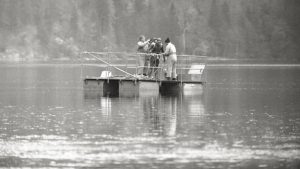 since the government report. Later, photographs from a submerged bunker surfaced, showing boxes with Cyrillic lettering. These are what led to the speculation that the boxes might contain panels from the Amber Room. The exact location of the bunker has been hidden from the public.
since the government report. Later, photographs from a submerged bunker surfaced, showing boxes with Cyrillic lettering. These are what led to the speculation that the boxes might contain panels from the Amber Room. The exact location of the bunker has been hidden from the public.
I expect that people will continue to try to find the treasures, even though claims will most likely be laid upon them immediately after they are located. The people who find them will probably only get the recognition for the find, rather than the right to keep the treasure. Maybe with an attorney who is good enough, they will walk away with a finders fee.

